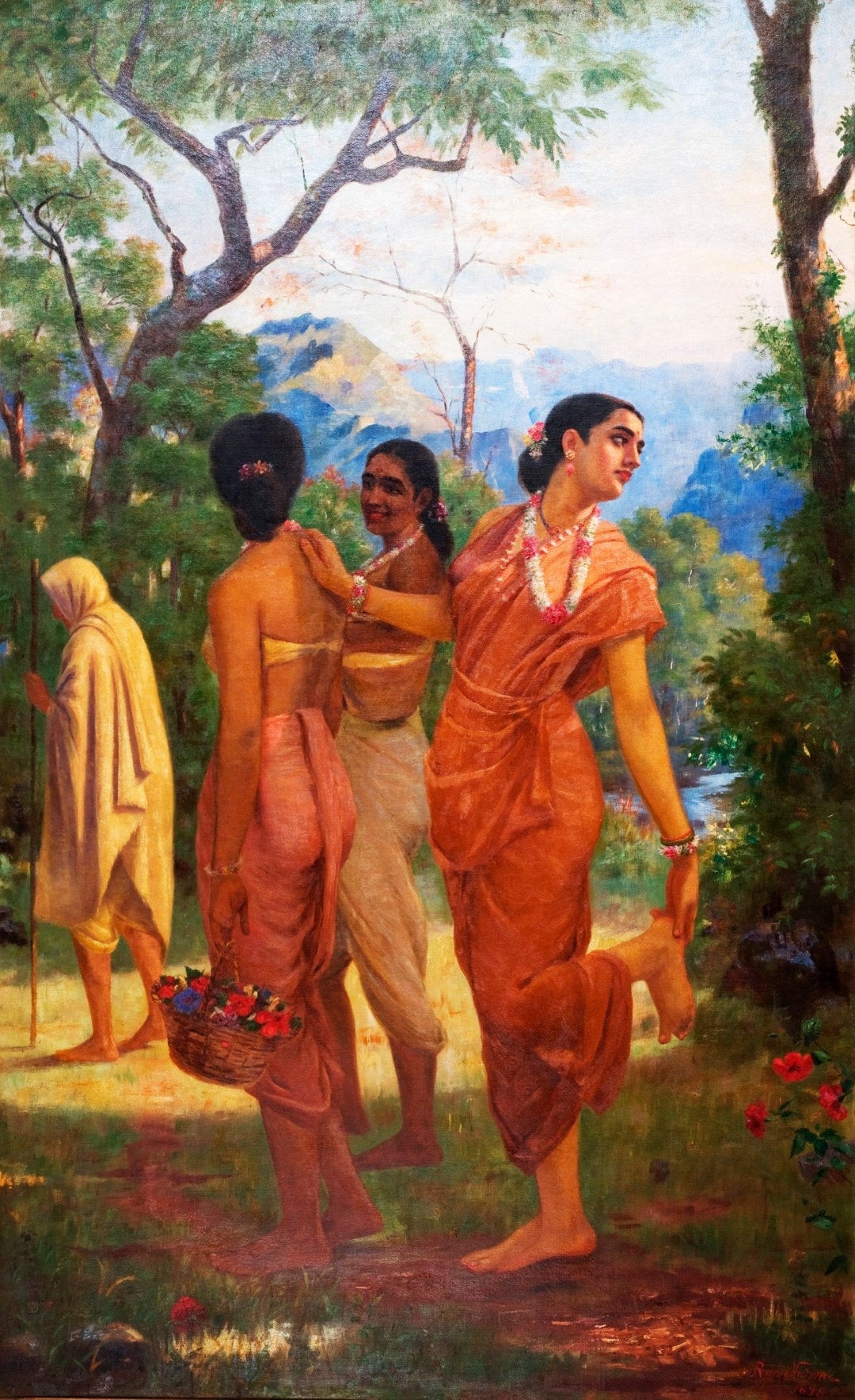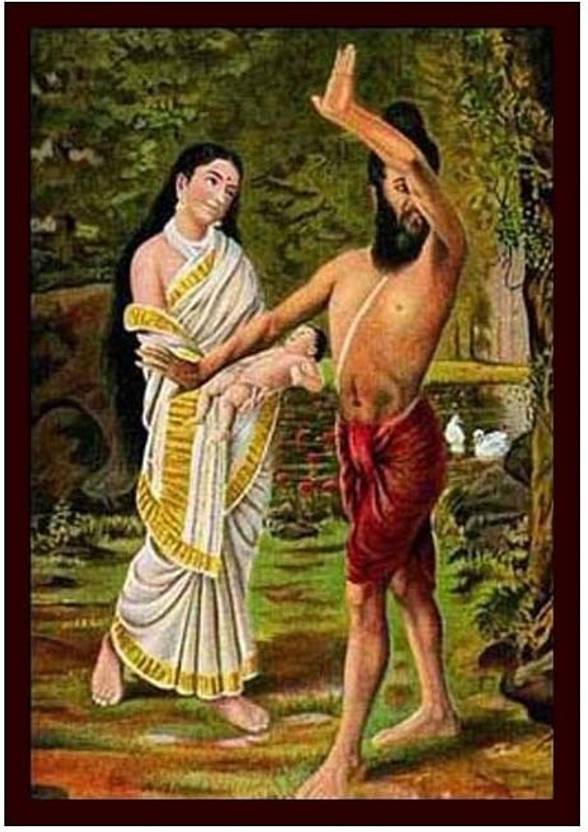Art History Exploration: Understanding Raja Ravi Varma
Raja Ravi Varma (1848–1906) was an Indian painter and artist who is considered one of the greatest painters in the history of Indian art. He is renowned for his contributions to the revival of Indian art and for popularizing Indian mythology and culture through his paintings.
Early Life:
Raja Ravi Varma was born on April 29, 1848, in Kilimanoor, a small town in the princely state of Travancore (present-day Kerala, India). He belonged to the princely family of Kilimanoor and received early training in art from his uncle, Raja Raja Varma.
Artistic Style and Techniques:
Raja Ravi Varma's artistic style was a unique amalgamation of European academic techniques and indigenous Indian artistic traditions. He was deeply influenced by the realistic style of European academic painting, which he combined with the rich iconographic traditions of Indian art. His mastery of techniques such as chiaroscuro (use of light and shadow) and perspective lent a sense of depth and realism to his paintings, while his use of vibrant colors and intricate details captured the essence of Indian mythology and culture.
Mythological Paintings and Themes:
Ravi Varma's mythological paintings are among his most celebrated works. He depicted scenes from Hindu epics such as the Ramayana, Mahabharata, and Puranas, bringing to life the gods, goddesses, and legendary characters of Indian mythology. His portrayal of mythological subjects was not merely illustrative but imbued with emotion, drama, and narrative power. Ravi Varma's ability to humanize divine figures and convey complex emotions through his art resonated deeply with audiences across India.
Portraiture and Patronage:
In addition to his mythological paintings, Raja Ravi Varma was also a prolific portrait artist. He received commissions from royalty, nobility, and prominent personalities of his time, including the Maharajas of Travancore and Baroda, as well as British colonial administrators. His portraits were highly sought after for their accuracy, elegance, and attention to detail, reflecting the dignity and prestige of his subjects.
Raja Ravi Varma created numerous iconic paintings throughout his career. Here are some of his most famous works:
Shakuntala: This painting depicts the legendary character Shakuntala from the ancient Indian epic Mahabharata. It captures Shakuntala lost in thought, gazing wistfully into the distance, as she waits for her beloved, King Dushyanta.
Damayanti and the Swans: Inspired by the narrative from the Mahabharata, this painting portrays Princess Damayanti conversing with swans in a lush, idyllic setting. It showcases Ravi Varma's skill in rendering natural landscapes and capturing tender moments.
The Birth of Shakuntala: Another rendition of the Shakuntala story, this painting portrays the moment when Shakuntala is discovered by Sage Kanva after being abandoned as a child. The painting exudes a sense of innocence and purity, with Shakuntala cradled in the arms of nature.
The Maharashtrian Lady: One of Ravi Varma's renowned portraits, this painting captures the beauty and grace of a Maharashtrian woman adorned in traditional attire. The intricate details of her jewelry and attire reflect the artist's keen eye for realism.
Lady with the Lamp: This portrait portrays a woman holding a lamp, with her face softly illuminated by the light. The painting is celebrated for its delicate handling of light and shadow, as well as the enigmatic expression of the subject.
Technological Innovations and Printmaking:
Ravi Varma was a pioneer in the use of lithography for the mass reproduction of his paintings. Lithographic prints of his artworks became immensely popular and accessible, reaching a wide audience across India and beyond. His collaboration with German lithographers like Fritz Schleicher and Wilhelm Hoffmann resulted in high-quality prints that preserved the integrity of his original paintings. Through the widespread distribution of his prints, Ravi Varma played a crucial role in democratizing art and making it more accessible to the public.
Legacy and Influence:
Raja Ravi Varma's legacy extends far beyond his artistic achievements. He is credited with revolutionizing Indian art and laying the foundation for the modernist movement in Indian painting. His fusion of traditional Indian themes with Western painting techniques paved the way for future generations of Indian artists to explore new artistic possibilities. Ravi Varma's influence can be seen in various aspects of Indian visual culture, from cinema and advertising to contemporary art and design. He remains a revered figure in the pantheon of Indian artists, revered for his creativity, innovation, and enduring contribution to the cultural heritage of India.
Conclusion:
Raja Ravi Varma's life and work epitomize the spirit of artistic innovation and cultural synthesis. Through his paintings, he bridged the gap between tradition and modernity, East and West, creating a visual language that continues to resonate with audiences worldwide. His legacy as a painter, printmaker, and cultural icon endures as a testament to his enduring relevance and significance in the annals of Indian art history.



Comments
Post a Comment